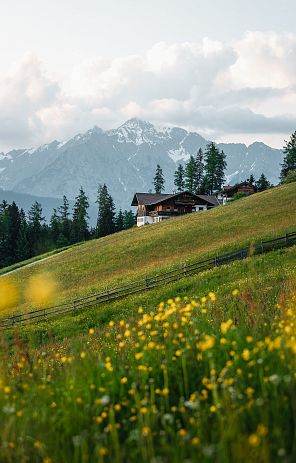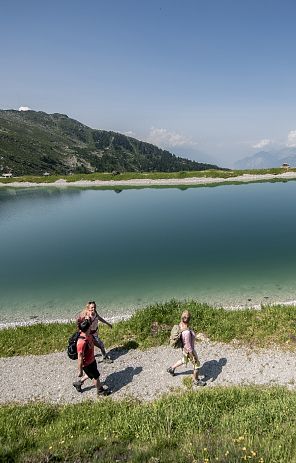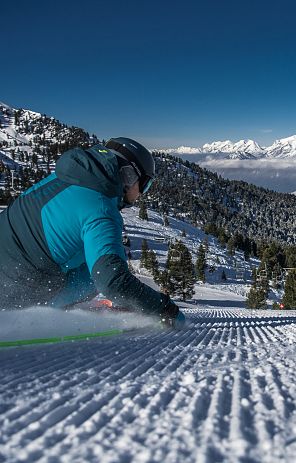150 years of tourism history. Hall-Wattens region
150 years ago, on November 15, 1870, the Hall in Tirol Beautification Association was founded as the first association of its kind in North Tyrol. Gustav Schweitzer, a municipal councillor in Hall at the time, was familiar with the town beautification association that had recently been founded in Bruneck and was aware of the need for such an organization. The need to set up a "caretaker" for tourist matters is also underlined by the origin of the association's first financial basis: a lady from Germany, who was staying in Hall for a brine bath cure, was generous and at the same time missed the fact that there were no benches to rest on in Hall.
However, guests did not only stay overnight in Hall in the second half of the 19th century; as early as 1674, Hall in Tyrol was a transshipment point for a wide variety of goods and a hub for traveling merchants 20 hosts or innkeepers. The Hall Beautification Association flourished quickly after its foundation. As early as 1871/72, the missing benches were purchased and plants were bought for greenery and a flourishing townscape. The association already had 105 members at this time.
Promoting tourism was also on the agenda early on. In 1877, the Verschönerungsverein published an advertising poster entitled "Hall and its surroundings", which contained information about the town, inns, spas and excursions. Roses were soon scattered for the vacation resort of Hall in Tyrol, as Peter Regalat Stolzissi wrote in a guide published in 1890: "I must expressly emphasize here that Hall and its district are excellently suited for summer holidays." The statistics report 1,854 guests in the summer of 1890, who stayed an average of six to seven days.
Winter was also appreciated, and around 1895 there were plans for a winter health resort in the Absam district of Eichat. Although the winter health resort was not realized, the nearby toboggan run in Halltal soon became famous. In the Tyrolean tourist and hotel book of 1904, Halltal is described as "the most beautiful of all toboggan runs." In the same book, Hall is also presented as a station for a ski tour to the Glungezer. In the following years, further highlights were set, including ski courses and ski races (from 1909) as well as the opening of a cinematograph (1910), a music pavilion (1924) and the mining museum (1929).
From March 1925, the former Verschönerungsverein operated under a new name as Fremden-Verkehrs- und Verschönerungsverein Hall und Umgebung. An important project was the opening of the new Kurmittelhaus, which cost around 2 million schillings: it was hoped that the Kurmittelhaus would develop Hall into a sought-after spa town and boost tourism. From 1932, Hall was granted the status of a health resort and from 1938 to 1974 the name "Solbad Hall" was used as the town name.
An excellent insight into the history of tourism in Hall is provided by a treatise by Dr. Paul Torggler, which sheds light on the history of tourism in Hall and the surrounding area. His father, architect Paul Torggler (1900 - 1989), worked as an architect and chairman of the tourism association. In the book, architect Paul Torggler recalls events on the moat in front of the Kurhaus between 1930 and 1938, which he himself helped to organize: "To promote tourism, a large summer festival was held by the Hall Tourist Association even in the politically highly charged summer of 1937, despite other bans on gatherings; according to a report in the Haller Lokalanzeiger of 18 August 1937, it was the largest Tyrolean tourist festival with 3,000 visitors."
During the summer season, the tourist office regularly organized concerts by the Speckbacher Stadtmusik and the Salinenmusikkapelle. Afternoon concerts by a salon orchestra were also held for guests in the Kurpark.
One of the first major events after the Second World War was the ball of the Solbad Hall Tourist Association on February 8, 1947 in the Kurhaus.
In the following decades, the new campsite (1950), the reopening of the town museum, the new Glungezer lift (1967) and the St. Barbara Gallery (1968) provided new impetus. The successful renovation of the old town began in the mid-seventies and Hall in Tirol was awarded the Austrian State Prize for Monument Protection in 1984.
The number of guests in Hall in Tirol rose from around 10,000 in 1960 to 15,000 in 1975 and almost 25,000 in 1989. At the beginning of the millennium, the numerous tourism associations in Tirol were merged into 34 large associations. The Hall Tourist Association merged with the neighboring communities to form the Hall-Wattens tourism region with Absam, Baumkirchen, Fritzens, Gnadenwald, Mils, Thaur, Tulfes, Volders, Wattenberg and Wattens.
The municipality of Hall in Tirol welcomed around 60,000 overnight guests in 2019, while the entire region welcomed over 150,000 arrivals. Even after 150 years, the beautification, preservation and attractiveness of the living space is still one of the tasks of the tourism association. The focus is on the well-being of guests and the local population alike.



